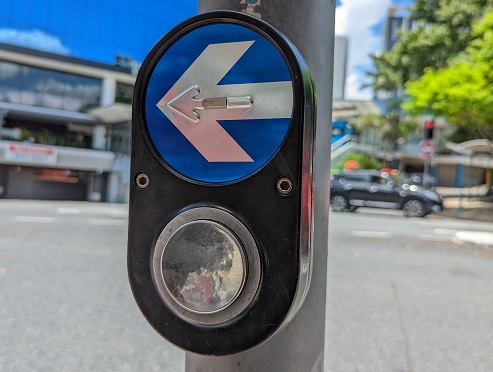The PB/5 crosswalk button is a fixture throughout Australian cities.
It’s been featured in museums, recognised by the media – It’s even made the Top 40!
What is it though, and why is it so noteworthy?
In 2022, the Powerhouse Museum produced a podcast called ‘Push to Walk: A People’s History of the Pedestrian Button’.
‘Push to Walk’ discusses the advent of the audio-tactile crossing signal, the motivations behind its development, and the movers and shakers that made it all happen.
In a recent episode of Talking Vision, Stella Glorie caught up with Bill Jolley, Deputy Chair of Vision Australia, who played a significant role in implementing the PB/5 button, and John Jacobs, producer of ‘Push to Walk’.
“It’s a very good design,” Bill said.
“It’s very handy when you’re crossing the road.”

Caption: The PB/5 crosswalk button has become ubiquitous across Australia
They talk life for blind and low-vision pedestrians before the PB/5, the effort it took to introduce the concept across Australian communities, and the audible-tactile features that make it so unique amongst street crossing signals.
“It takes a huge amount of people and sometimes a long amount of time to make something happen that we just take for granted, and the audible traffic signal is a great example,” John said.
As someone who is sighted, Stella highlighted how something designed to support people who are blind or have low vision has become part of everyday life.
“I have taken the audible pedestrian traffic lights for granted,” Stella said.
“I cannot remember them not being there.”
You can listen to the full Talking Vision episode on Omny or via the player below:










